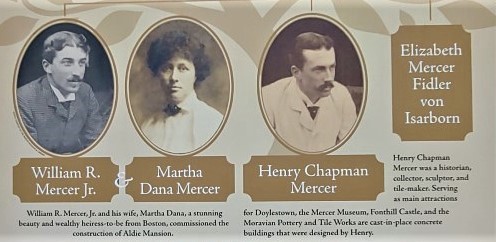A German archaeologist seeks help in revealing the life of Henry Mercer’s lesser known sister.
In writing about Bucks County, I get email from all over the world. There’s apparently that much interest in our historic area of the planet. The latest comes from an archeologist in the Bavarian section of Germany.

Natascha Mehler, professor of historical archaeology at the University of Tubingen, contacted me after reading online my column about Elizabeth “Lela” Mercer, the little known sister of Henry Chapman Mercer. Lela and brothers Henry and William grew up in the mid-1800s in Doylestown, the grandchildren of Bucks County Judge Henry Chapman. Grandson Henry, an archaeologist and founder of the Bucks County Historical Society, built the 9-story Mercer Museum in Doylestown as well as his home a few blocks away, awe-inspiring Fonthill Castle. William, a successful sculptor, constructed Aldie, a Tudor-styled mansion that replaced the original Aldie villa just down the hill from Fonthill. Sister Lela married a European baron at Aldie and moved permanently to Europe.
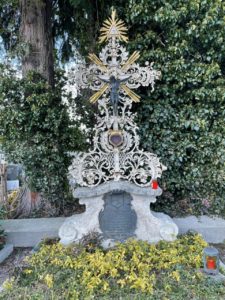
Natascha heads the historical society in Aschau im Chiemgau, a village in the Bavarian Alps 40 miles west of Salzburg, Austria (think “Sound of Music”). To her surprise, she discovered the town’s connection to Doylestown. As she put it to me, “Lela Mercer is buried here! As it happens, our association is trying to take care of her grave marker. There seem to be no more relatives who can take care of it but I hope we can preserve it and keep it somewhere in our village, maybe our local museum.”
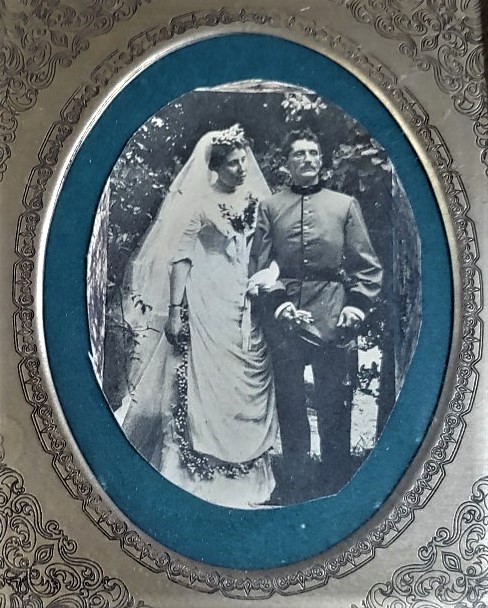
To that end, Natascha is developing a lecture to better acquaint local folks with the historical significance of Lela and her Doylestown family. My column published last March encapsulates Lela’s story though many more details exist in the Spruance Library of the Mercer Museum. I facilitated Natascha’s contact with archivists Cory Amsler and Annie Halliday at the library who are busy helping her. Meanwhile, here’s my CliffsNotes version of the story:
Lela was born in 1858 to Mary Chapman Mercer, daughter of county Judge Henry Chapman and wife Rebecca. Lela was the middle child. Harry was two years older; Bill six years younger. Lela was a nickname after beloved aunt Elizabeth “Lela” Chapman. She was Mary’s sister who married into the ultra-rich Lawrence family of Boston. After the premature death of her husband – London attache T. Bigelow Lawrence – she used her inheritance to build a two-story Italian villa for Mary and her children on the edge of Doylestown. She called it Aldie after the Mercer ancestral home in Scotland.
Aunt Lela, who was childless, shared her riches with Mary’s kids. The siblings traveled extensively in Europe, often with their aunt who immersed them in art, foreign languages and history. The kids in their teens and early 20s joined their aunt at governmental receptions, weddings and balls in London where they socialized with the rich and famous.
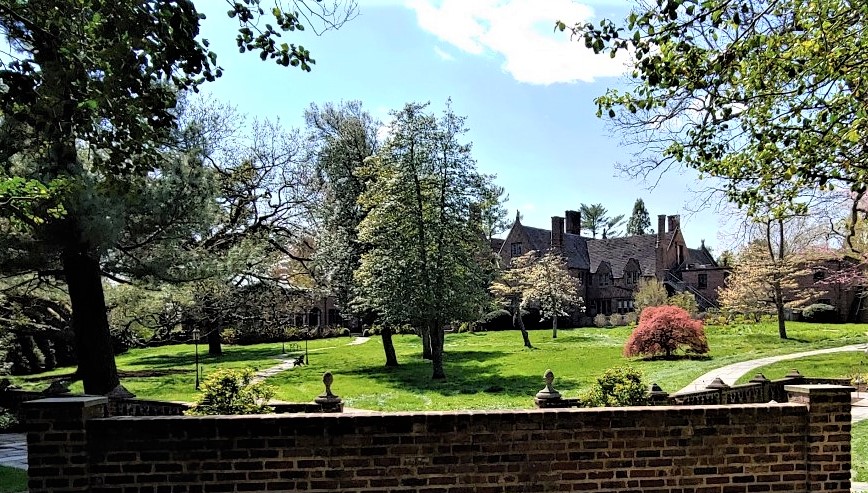
When Lela turned 28 and was visiting England, brother Henry invited her to join him for a leisurely voyage by raft and houseboat down the Danube River in Germany. They spent the winter at a former cloister near Vienna where they learned Austrian dances, enjoyed entertainers strumming zithers and guitars in beer halls, and participated in wine making.
One day while strolling along the river, Lela encountered an officer on leave from the Austrian Army. His form-fitting uniform with turquoise embellishments caught her attention. He introduced himself as Ober-Lieutenant Baron Hubert Fidler von Isarborn. It was a kinetic moment. Lela discovered he was a gifted artist and singer who played the zither. The couple became inseparable. As the days rolled on, the baron taught Lela better German; she taught him English. Their blossoming romance made some worry he had no financial prospects. But the young lovers had Aunt Lela’s largesse to fall back on that she freely offered.
The following summer – 1888 – the baron arrived in Doylestown to marry Lela. A Catholic priest conducted the ceremony in mid-July in Aldie’s ornamental garden. According to the local newspaper, “The bride wore white silk, the groom his full army regalia. Hassler’s orchestra of Philadelphia provided the music.”
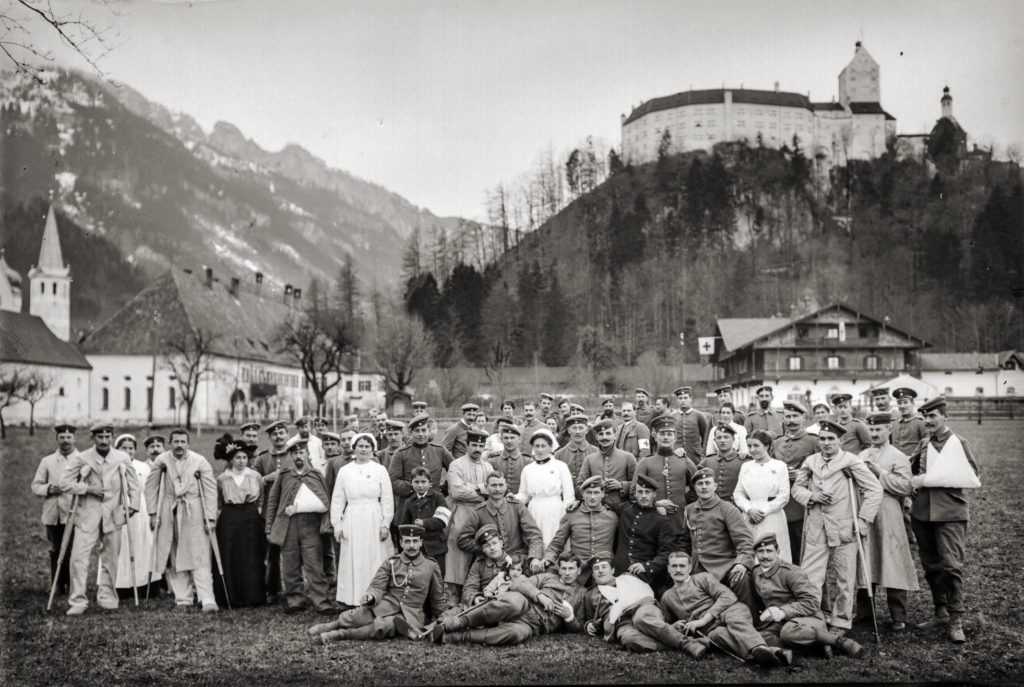
After an extended honeymoon at Aunt Lela’s cottage in York Harbor, Maine, the happy couple sailed for Austria through the Mediterranean with stopover in Spain so Hubert could sketch Alhambra, the famous fortress in Granada. Five years later Lela gave birth to daughter Walpurga, the only surviving heir of the Mercer trio. Henry was a life-long bachelor; William’s twin sons died in infancy. Lela, who passed away in 1919 after facing much hardship during World War I, lived long enough to see her daughter marry Austrian Baron Edouard von Friesen. Walpurga later give birth to son Bernard whose progeny lives on.
Today Lela and the Mercer family are memorialized in a fresco on the Aldie grounds – and perhaps soon in Aschua.
***
Sources include “EL: The Bread Box Papers. A Biography of Elizabeth Chapman Lawrence” by Helen Hartman Gemmill; copies of letters of Lela Mercer at the Spruance Library in the Mercer Museum, Doylestown; “Henry Chapman Mercer: An Annotated Chronology” published by the Bucks County Historical Society in 1989, and the Doylestown Democrat’s coverage of Lela’s wedding published on July 31, 1888.

